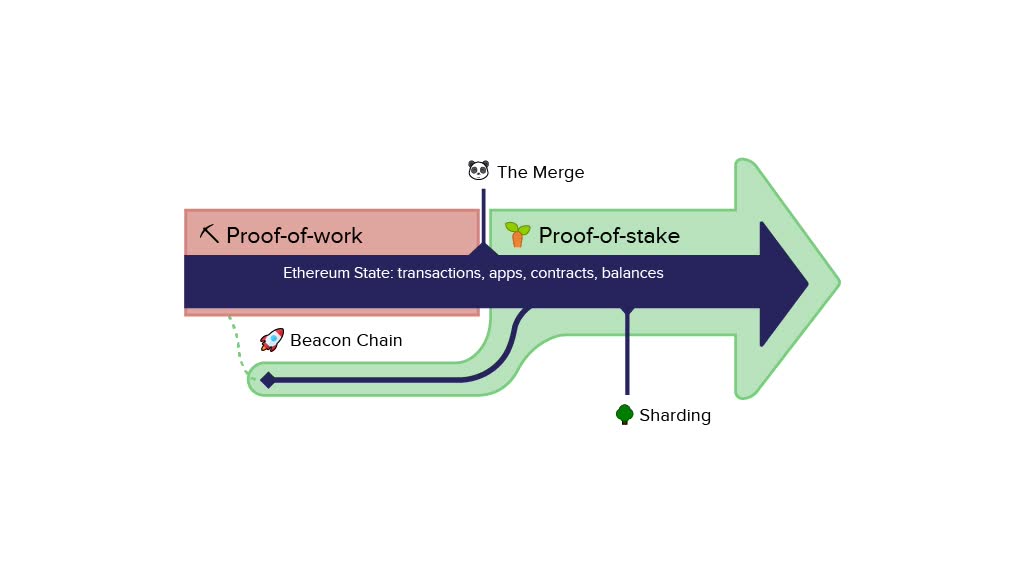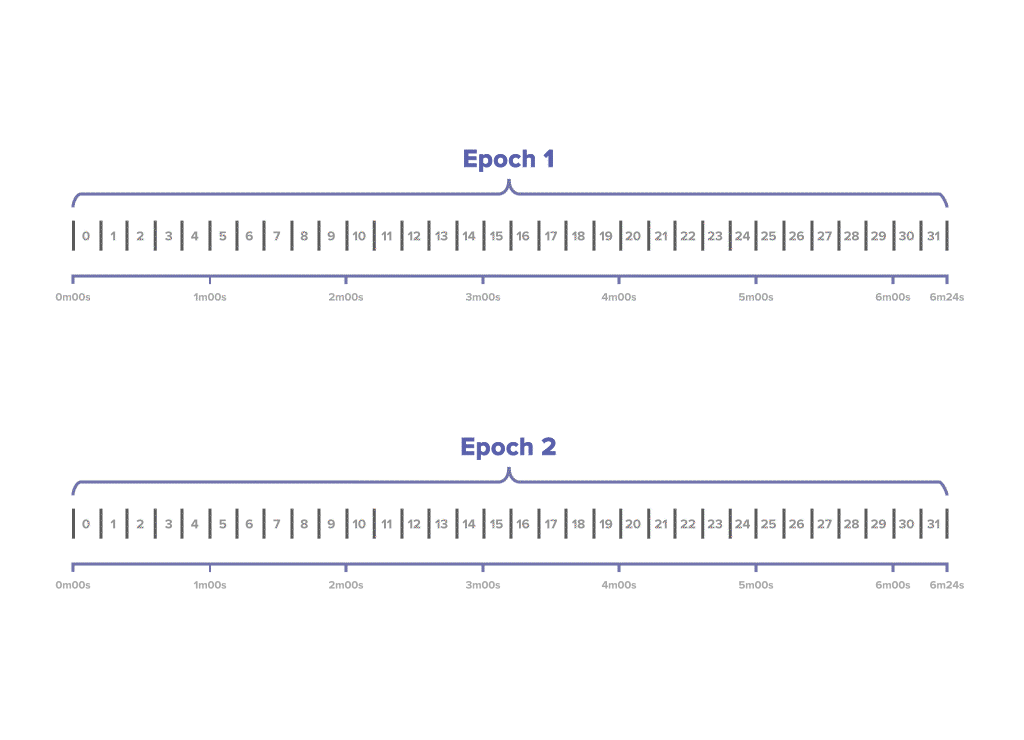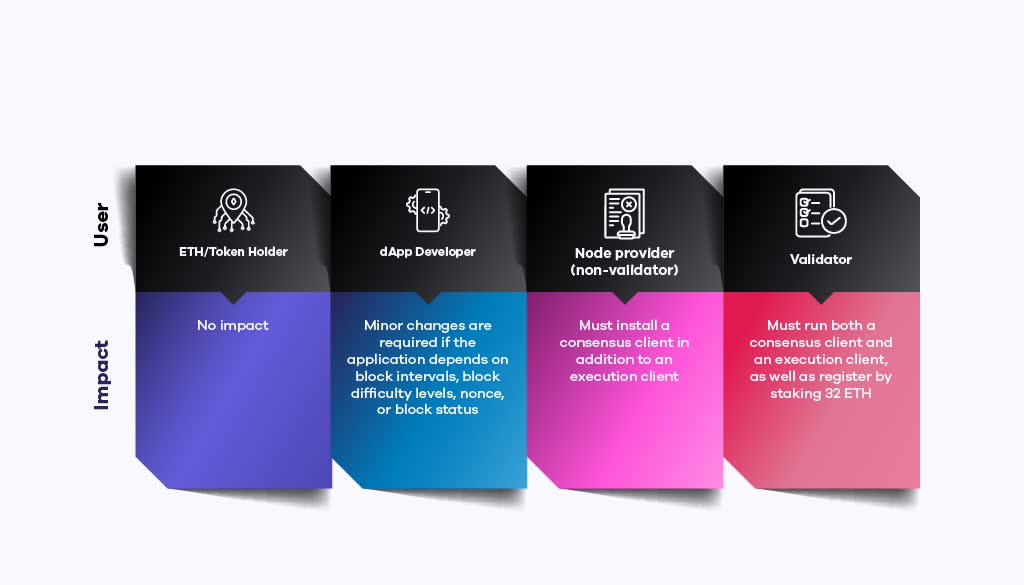Navigating the changes brought by the Ethereum Merge
Let’s dive into the changes brought by the Ethereum Merge and what they mean for you, whether you’re a crypto holder, a blockchain app (dApp) developer, a node provider, or a validator.
On September 6, 2022, the Ethereum Merge finally happened. “The Merge” may sound a little ominous, but it simply refers to the merging of Ethereum’s legacy blockchain with the Beacon Chain, released in December 2020. The old one used the energy-intensive proof-of-work process to validate transactions, and the new one uses the environmentally friendly proof-of-stake process.
With these two blockchains joined, the whole Ethereum network now runs on the proof-of-stake system.
So, what does The Merge mean for you? It depends on how you interact with Ethereum. We’ve included some of the same advice we gave to our customers that made The Merge as seamless as possible for them.
We’ll first give a rundown on why The Merge was needed in the first place. Next, we’ll quickly cover some of the technology and various concepts that’ve been added to Ethereum due to The Merge. Then, we’ll go into how those changes have affected you, whether you’re a holder of Ethereum or Ethereum tokens, a blockchain app (dApp) developer, a node provider, or a validator.
Why was The Merge needed?
To increase the number of transactions that can be completed on Ethereum – With the proof-of-work protocol, Ethereum could process only 15–30 transactions per second. With The Merge and a concept called sharding (a technology expected to be released in 2023) Ethereum could process 20,000–100,000 transactions per second.
To reduce power consumption – Resulting from the change to proof of stake, a 99.9% reduction of power consumption is expected.1
What has changed due to The Merge?
At a high level, the only change brought by The Merge is that Ethereum now uses the proof-of-stake consensus model instead of the proof-of-work consensus model.

Based on this move, however, you may need to make significant changes on your end if you haven’t already, depending on your role within the Ethereum ecosystem.
What’s involved in the proof-of-stake process?
Miners no longer compete for block rewards. Instead, people taking the role of validators, who need to stake 32 ETH to become a validator, are paid to perform assigned tasks. At a very high level, this is how the proof-of-stake process works.
- The block time in proof of stake is fixed, and it is divided into epochs and slots (12 seconds each) (32 slots).
- In each slot, a committee of 128 randomly chosen validators is formed to produce new blocks, and one validator is chosen as the block proposer at random to propose a block. A fresh block must be created and distributed to other network nodes by this block proposer. Additionally, a committee of validators is chosen at random for each slot, and their votes are utilized to determine whether the block being presented is genuine.
- A slot becomes “justified” if at least two thirds of validators declare it to be legitimate, indicating that the majority of voters supported it. Once a target is “justified” the source, which is already “justified” becomes “finalized.”
- At the end of each epoch, the committee members are reshuffled to form new committees.
Look at the animation below to further understand how blocks become finalized .

New incentive structure for validators
With the move to proof of stake comes new rewards and penalties. In short, the incentive structure of Ethereum 2.0 pays for honesty and punishes bad actors.
Rewards: Validators receive rewards when they make votes that are consistent with the majority of other validators. This occurs when they propose blocks and when they participate in sync committees.
Penalties: Validators that make incorrect, source and target votes, are slow to vote, or don’t agree with the majority (2/3) on if a block is valid, will incur a penalty equal to the rewards they would have received if they voted correctly
Slashing: Slashing occurs when a validator is ejected from the active validator set and has some portion of their deposited validator funds burned.
The following violations will result in slashing:
- Double voting: a validator signs two different attestations in one epoch.
- Surround votes: a validator casts a vote that is surrounded or surrounds a previous vote, meaning that they are going against what has already happened.
- Double block proposal: a validator signs two different blocks for the same slot.
Impact of The Merge on ETH and ERC-20 token holders
The Merge did not affect the state of Ethereum. Accounts, balances, NFTs, smart contracts, etc., were not affected by the merge.
Therefore, if you’re an ETH or Ethereum token holder, you don’t have to do or worry about anything.
Impact of The Merge on dApp developers
If you haven’t already made changes related to The Merge, minor changes will be required if your blockchain application depends on block difficulty levels, nonce, block intervals, or block status.
Difficulty will be set to 0
When Ethereum ran on the proof-of-work consensus model, the concept of block difficulty, or how difficult it is to find the hash of a block during the mining process, was needed. As mining has been replaced with staking, difficulty levels are no more. Difficulty fields in application code will now return a value of 0. So if your application relies on difficulty levels, you should modify the code accordingly.
The same goes for if you’re a smart contract developer. If you used difficulty levels as one of the values which which to introduce randomness into your smart contracts, you should also take action.
Nonce will be set to 0
A nonce, a string of numbers generated to validate a block, is another concept that was associated with mining and is therefore no longer relevant. While nonce was used in part to prevent signature replay attacks, the new EIP -712 standard has addressed this by introducing a more secure signing method.
New block interval
Previously, it took an average of 14–17 seconds for miners to create a new block on the Ethereum blockchain. With The Merge, blocks are now created in regular 12-second intervals. If your application depends on block intervals, you will need to take the block interval change into account.
New block status tags
The new way of validating and creating blocks also comes with new JSON tags to describe the possible states of a block, including proposed, scheduled, missed/skipped, and orphaned.
Impact of The Merge on node providers and Validators
Two clients are now needed
Before The Merge, running one client was enough to turn your computer into an Ethereum node. All transactions and user activity happened on one client, which took care of transaction handling, transaction gossip, and state management, as well as the consensus logic.
However, the client logic has now been separated with The Merge, so both an execution client and a consensus client must be installed to gain access to the Ethereum network.
Based on the requirements and available alternatives, you must select the environment, client setup parameters, and client implementation for both execution and consensus clients. You should investigate each to see which provides the features or programming languages that are best suited to your requirements. Before choosing a client implementation, review all Mainnet-ready execution clients, consensus clients, and client diversity possibilities.
Another thing to consider when choosing clients is that client diversity makes the network more resilient to attacks and problems by avoiding a single point of failure. That’s why multiple, independently built and maintained clients exist. The ability to have multiple clients is unique to Ethereum; other blockchains rely on the infallibility of a single client.
As of December 2022, the majority of node operators used the Geth execution client at 76.61%, followed by Nethermind at 9.01%. As for consensus clients, 41.94% were using Prysm, followed by 37.18% for Lighthouse.2
Summary
Based on our knowledge and understanding, these are the impacts you will need to consider now that the Ethereum Merge has happened, whether you’re an ETH/token holder, a dApp developer, a node provider, or a validator.

What Relevantz Can Do for You
With our vast knowledge and experience in blockchain and creating blockchain applications, such as DeFi applications for financial services organizations, Relevantz can help you explore decentralized app use cases and help build apps that will delight your traditional customers and crypto customers alike.
Want to serve your customers through blockchain-based applications?
